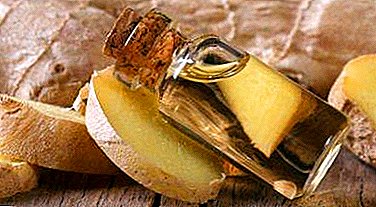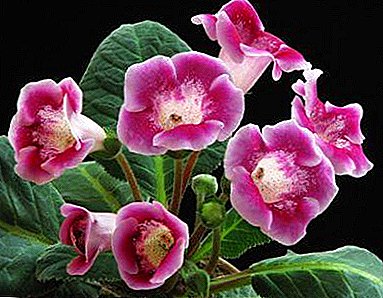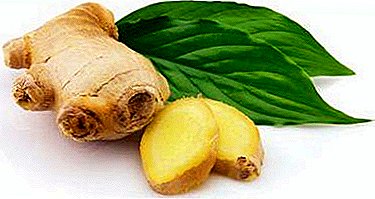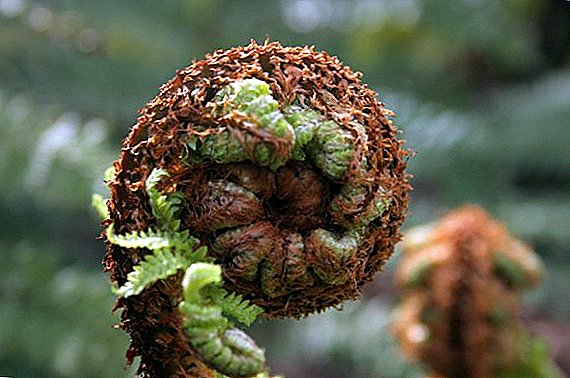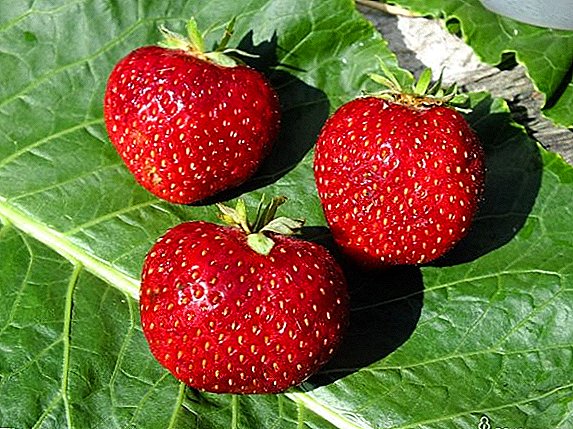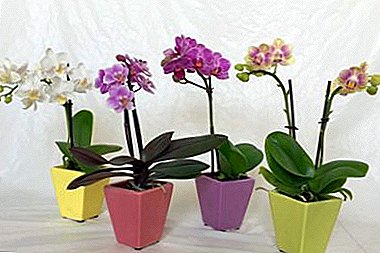
Some inexperienced flower growers believe that a healthy dwarf orchid, or mini orchid, is able to survive in all conditions. But this is far from the case. Even a healthy and strong plant needs a certain environment.
If an orchid grows in conditions that are unacceptable to it, it will lead to an early disease of the flower, and, as a result, its death. In our article we will talk in detail about the rules of cultivation of mini-orchids and the features of caring for them at home. You can also watch a useful video on this topic.
What problems may arise with the plant after the store?
The main problems when breeding dwarf orchids are as follows:
- Yellowed leaves - a sign of excessive moisture or abundance of light.
- Flower fall - A sign of too high temperature or lack of moisture.
- Shrunken and darkened leaves - the plant does not have enough water.
- Leaf rot - a sign that the plant is improperly cared for. During watering water falls on the leaves. If this happens, you need to wipe the leaves with a dry cloth.
Features of dwarf species
 A feature of mini orchids is that they are grown by planting in moss. Moss retains moisture very well. Therefore, dwarf orchids need more frequent, but less abundant watering, unlike regular-sized orchids planted in a substrate.
A feature of mini orchids is that they are grown by planting in moss. Moss retains moisture very well. Therefore, dwarf orchids need more frequent, but less abundant watering, unlike regular-sized orchids planted in a substrate.
To preserve the required amount of moisture, it is recommended to spray flowers twice a day.. You need to make sure that the droplets of moisture did not linger on the leaves, otherwise the process of leaf rot will begin.
Water the orchids by dipping the pot into a container of water. As soon as the moss becomes wet, I return the container with a flower to its permanent place. Feeding should be carried out once every two weeks. This concerns the stage of active growth.
During the period of rest, that is, in the autumn-winter period you should not feed the orchid (how to care for an orchid in the autumn-winter period can be found here). It is better to feed the flower by spraying the leaves with a specialized means diluted in water, which can be purchased at a flower shop.
Mini orchid should only grow in a transparent pot. This is due to the power plant. It absorbs nutrients and sunlight from the environment. Planting in another pot - plastic or ceramic - will lead to rotting of the roots and further death of the orchid.
What is needed for the successful cultivation of low-growing varieties?
Of course, a plant that hails from warm, humid countries requires that home conditions should at least partially resemble the climate of their natural environment.
- Temperature. A dwarf orchid will feel comfortable in a place where during the summer period the air temperature fluctuates between 18-25 degrees above zero. In winter, it is necessary to provide a temperature of 15 - 20 degrees. In case temperature standards are increased, the orchid will start dropping flowers. With a shortage of heat will not be able to release the arrows and will not bloom.
- Lighting. It must be remembered that the mini-orchid is a very delicate flower. She cannot live without sunlight, but its excess is destructive. Therefore, it is necessary to ensure that the flower scattered sunlight. Due to direct exposure to the sun, burn marks may appear on the leaves.
- Watering. Water the dwarf orchid should be depending on the drying of the moss on which it grows. It is better to use submersible watering. So you can protect the roots of orchids.
- Humidity. Optimum will be the level of humidity in 35 - 40%. With a lack of moisture in the environment, the plant will begin to wither and drop flowers. When excessive humidity can begin the process of rotting.
Board: If in an apartment where orchid mini grows dry air, it is necessary to place containers with water.
More about the features of growing different varieties of orchids, as well as what difficulties novice gardener may encounter, read here.
Choosing a place
 The most comfortable place for growing a mini-orchid will be a room with windows facing east. With this arrangement, the flower will be enough sunlight in sufficient quantities.
The most comfortable place for growing a mini-orchid will be a room with windows facing east. With this arrangement, the flower will be enough sunlight in sufficient quantities.
If this arrangement is not possible, you can place the plant on the south side of the apartment, using a protective screen for darkening and protection from direct sunlight.
More about where it is better to put an orchid, and where you can not keep a flower, read here.
Terms of maintenance in the apartment
Caring for a plant varies depending on the length of time in the apartment. Immediately after purchase, the orchid must go through a period of adaptation.
How to take care of dwarf brands after purchase?
It is very important that the plant is not subjected to severe stress. He will need to get used to the new conditions. In addition, it should not harm the flower to the health of existing plants. Therefore, immediately after purchase, the orchid should be placed in quarantine.
Pot set aside at a sufficient distance from other plants. It is best to choose a shaded place.
During the quarantine period, the plant does not need to be fed.
The flower should be provided with complete peace. But this does not mean that for two weeks - that is how long the quarantine lasts - you need to forget about the orchid. It must be periodically examined. To successfully get used to the new conditions, it is recommended to temporarily stop watering.
After the quarantine period has come to an end, it is necessary to gradually accustom the plant to sunlight.. To do this, put a flower pot on the windowsill for a short period of time. Daily time spent on light may increase.
Content in the post-adaptation period
After the quarantine is over, it must be placed in a place inaccessible for direct sunlight. It is necessary to provide in the room acceptable temperature and humidity for the orchid.
Possible problems and difficulties
 Flower growers who start growing mini orchids often face the following problems:
Flower growers who start growing mini orchids often face the following problems:
- viral diseases;
- pests and parasites;
- yellowing or darkening of the leaves.
In order for the plant not to become a victim of numerous pests, it must be inspected daily.. The fight against parasites (ants, ticks, cockroaches, whitefly) is carried out with the help of special chemical solutions. You can remove insects from the leaves by hand. Avoid viral diseases will help regular feeding, rubbing leaves and the attention of the owner.
Conclusion
If orchid leaves begin to take an unhealthy look, then you need to review the frequency of watering and pay attention to the air temperature and humidity in the room. Observing uncomplicated requirements will help not only to keep a surprisingly sweet and gentle plant. But it will allow to achieve a long and abundant flowering that will not leave anyone indifferent.



